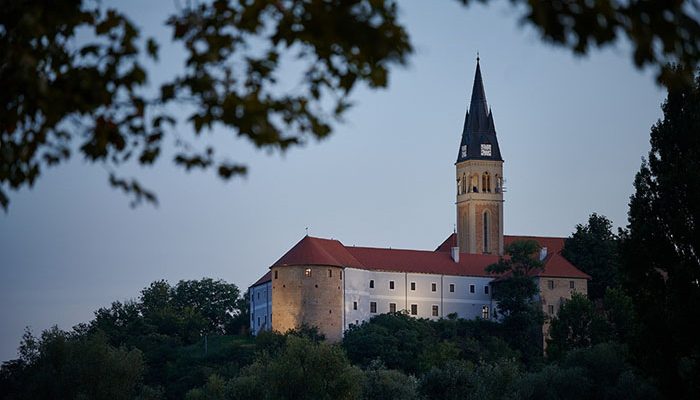
The natural beauties of the Slavonian rivers are a good tourist offer start. However, these towns offer much more than this
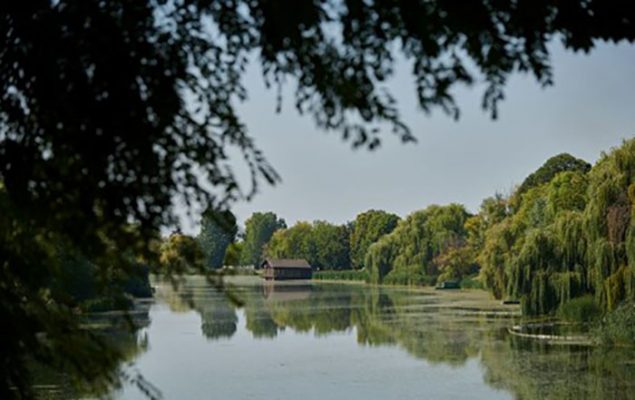
PHOTO: SANDRO LENDER
This year the tourist season surpassed all expectations. An unexpectedly high number of overnights was recorded at the coast and the results of the tourist season are much closer to those of 2019 than those of 2020. Numerous tourists visited the continental part and a large surge in the number of visits happened in the easternmost part of Croatia. For foreign tourists, the Vukovar-Srijem County is high on the top destination list.
A growth of 140.18 % in foreign tourist overnights was recorded compared to the year before and the number of overnights of 2019 was also surpassed. This inspired us to research what the East of Croatia has to offer. We passed the route from Vinkovci, through Otočki Virovi, made a stop in Nijemci, visited Vukovar and ended up in Ilok. We have created modern picture postcards and caught a rich glow of flair and tradition interwoven with history, culture and gastronomy.
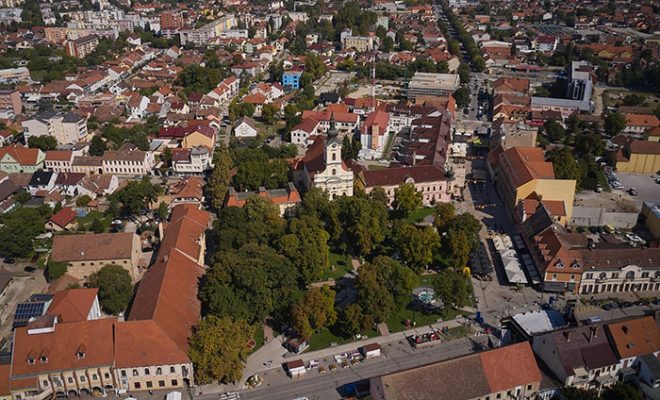
PHOTO: SANDRO LENDER
The Oldest Settlement in Europe
Only 20 minutes away by car from Vukovar, just by the Bosut river, there is the oldest settlement in Europe, 8,000 years old. Of course, we are talking about Vinkovci. Numerous peoples and civilisations left a mark in this economically and strategically important region. The brothers Valentinian I. and Valens were born here, the only Roman emperors from the territory of today’s Croatia. The ‘Roman Days’ are devoted to them, one of the numerous events taking place every year. It is only here that you can taste the dishes of the ancient Cibalae from the times of the Roman Empire.
A breath of history has also been transferred to the streets. In the most beautiful baroque kernel of Vinkovci, the pedestrian zone is decorated with motives from the Orion vessel. The vessel was found at the site of today’s Slavonia Hotel. It has the oldest Indo-European Orion calendar engraved. It was established that the engraved decorations present a constellation dominating the night sky above Vinkovci i.e., it is the most complete Indo-European calendar based on astral symbolism with the relevant constellation for all four seasons of the year.
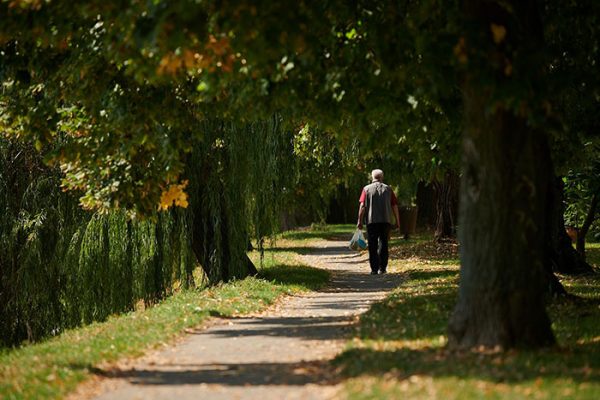
PHOTO: SANDRO LENDER
From the Indo-European Calendar to the Hologram
There is no lack of promenades for rest and sightseeing. The longest promenade, four kilometres long, extends along the Bosut river and takes you from the centre of Vinkovci to the Sopot excursion site. As a place for going out, the people of Vinkovci of all generations very much like the Dionizije Švagelj Promenade and in the very heart of the town there is the Lenije town park providing shadow with its forest.
After having arrived at the centre, you must by all means visit the Municipal Museum exhibiting the hologram of the latest military ban of the Kingdom of Croatia, Dalmatia and Slavonia, ban Josip Šokčević and the Orion vessel. The Museum has six departments and, with its content, if offers an excellent overview of the history and way of life in this town.
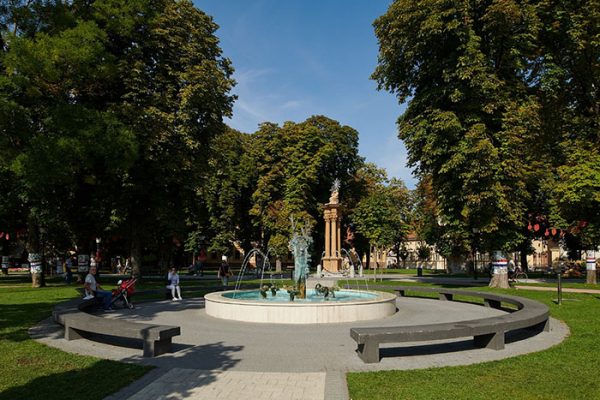
PHOTO: SANDRO LENDER
It is located along the central town park where there is the Church of Saints Eusebius and Polion from the 18th century. The baroque church is filled with valuable works of art, mostly renovated after the great devastation in 1991. It is one of the numerous sacral monuments in Vinkovci.
In the vicinity, you must by all means visit also the replica of the Ivan Kozarac’s birth house and, at Krnjaš, the only remaining ‘Šokac’ street in Vinkovci. From the outside, the house looks like an original built at the start of the last century, while within the house there is the professionally renovated 150 years old furniture, from the times of the youth of Ivan Kozarac.
Remnants of Recent Cultures
One of the specialties of Vinkovci that should be emphasized is the Sopot Archaeological Park uniting six Sopot houses that used to be built in swamps, along brooks or, like in this case, along the Bosut river. The houses have been reconstructed according to the findings from this locality and have been named ‘sopot’ because of the culture that they belonged to and which, thanks to the archaeologist Professor Dimitrijević, carries the name since 1971.
The recent history of the town is very much connected to the railroad. The rich history of the railway system of the wider Vinkovci hub has lasted continuously since 1878. At the Vinkovci railway station, there is the Croatian Railway Museum with its permanent exhibition including the newly built ten meters of railroad on which smaller vehicles have been placed (a tricycle, a railroad cart) and various tools that were used in the construction of the railway. Until 1991 and the start of the war in Croatia and former Yugoslavia, the Vinkovci Railway Station was the biggest railway hub on the Balkans.
Active vacation lovers will most certainly be glad that the starting point of the Srijem bicycle route is in the centre of Vinkovci – at the lamp in Vinkovci. The route goes through Rokovci, Andrijaševci, Cerna and Gradište towards Cvelferija, then through Gunja, Vrbanja and Drenovci to Otok.
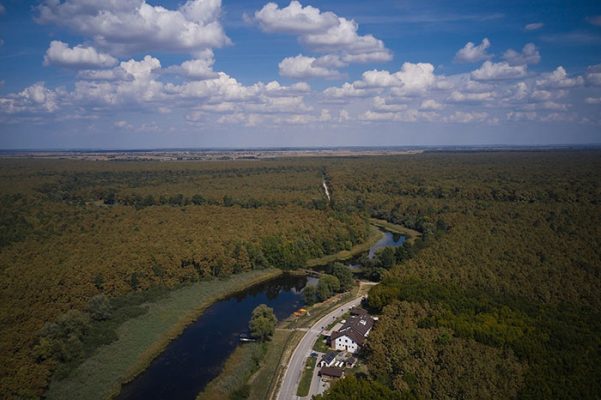
PHOTO: SANDRO LENDER
Natural Phenomena
The last station of the mentioned route is the town of Otok where recently the project of ‘The Door of the Spačva Basin’ has been completed and the Bioecological-Education Centre Virovi opened. The area is known for its Virovi natural phenomenon that through the greater part of the year looks like a swamp. During major precipitation, in spring and in autumn, the water level raises significantly and then the ‘virovi’ establish a natural connection with the Spačva river and through it also with the Bosut and Sava, behaving just like a small slow flowing river.
Virovi are surrounded by the spacious ‘Spačva’ forest. It is not very well known that the pedunculated oak forest is unique in the world because of its surface precisely on the territory of the Spačva forest basin and that it is an integral part of the national ecological network. Because of the rather untouched nature, the autochthonous bird species have been preserved, which ornithologists can find only in this unusual water flow area. The same is with fish.
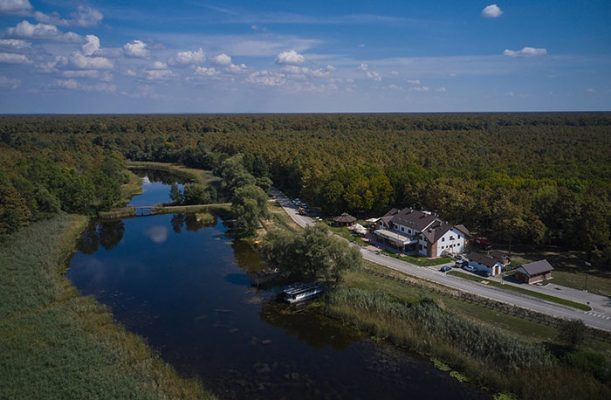
PHOTO: SANDRO LENDER
The Bioecological-Educational Centre Virovi has for its visitors ensured all the conditions for a safe survey of the area. On the ground floor, there is a restaurant offering autochthonous dishes such as game, catfish, carp and perch. You can also stay the night. The prices per night are between HRK 130 to 180 per person. The Centre is also the starting point of the almost three kilometres long Virovi educational trail that follows the already existing forest trails and fishermen’s routes.
A Town Full of History
In the immediate vicinity of the Centre, there is the Virgrad mediaeval archaeological site that had been covered with dense natural forest for decades. With the revival project, this protected cultural monument and the former fort from the 14th century are now open as a tourist site and included in the list of educational trails. At the site, a high birdwatching point has been built with sitting benches, informative boards and information on the site and road signs, all the parts being made of wood under the watchful eye of the conservators.
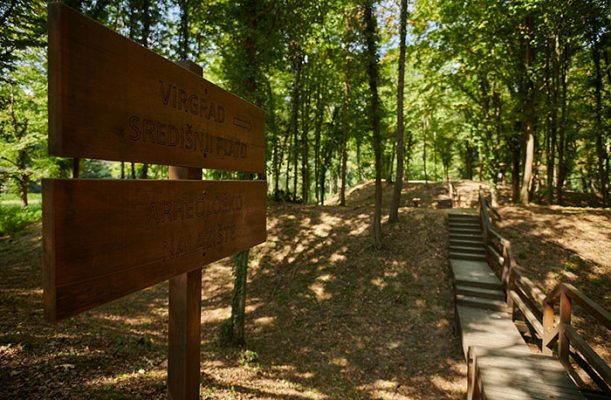
PHOTO: SANDRO LENDER
If the road takes you to the very town of Otok, it is certainly worthwhile to visit the ‘suvara’, a dry mill whose driving force in the past used to be oxen or cows, but most often horses. It served as a grain mill i.e. for wheat, barley, corn and oats but also salt for animal and human nutrition. Today this is the only such preserved facility in this part of Europe.
The town is also known for its ‘kulen’, the production tradition of which is witnessed by a record from 19th century by Josip Lovretić, a famous Otok ethnographer and priest. ‘Kulen’ is made of the autochthonous black pig and is presented at spring ethno-gastro events of ‘Otočka kulenijada’ and ‘Kulen Fair’.
Srijem Triangle
Only half an hour away by car, further from Otočki virovi, there is the Nijemci Municipality with its eight villages located in the Srijem triangle. The documented history of the villages goes back to the Roman times, while in the central park, only a meter below the surface, there is an entanglement of walls and cavities. The site has been determined as a Turkish bath, which is not unusual since the place was under the Turkish rule for 150 years.
According to church records from 17th century, it is obvious that Nijemci were the centre of the Catholic Church in Srijem. To find about the history of the town, it is best to visit the Native Luka Natali Museum in the Pastoral Centre of the Nijemci parish that got its name after the Belgrade bishop and apostolic vicar of the lands under the Turkish occupation.
In the museum, you can find everything from the foundation of the settlement to the modern history and visit the ethno room created in the traditional style with details of the past presenting life that used to be lived in this area. A collection of cultural and historic as well as ethnographic objects of Josip Bašić preserves over 700 exhibits including traditional clothing, objects used in rural households, sacral objects and tools typical of old and forgotten crafts.
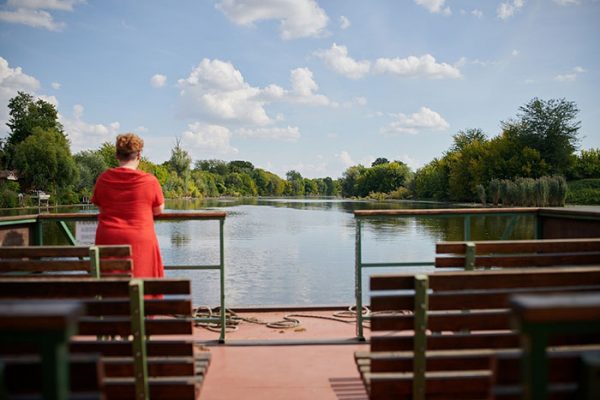
Tourist boat on the Bosut, SANDRO LENDLER
Navigate the River
The Bosut and Spačva rivers offer river tourism in Nijemci. We took the St Catherine catamaran to the Sopotac excursion site, starting from the Arboretum Park with a traditional Srijem garden. In Sopotac, there is the Birdwatching Centre that can be reached also by land, i.e. on the five kilometre long trail with informative boards and rest stops with smart benches.
Interesting information that we learned is that the bird fauna in Nijemci includes as many as 89 species of which egrets are most known. We had binoculars, telescopes and birdwatching manuals at our disposal.
When visiting the Vukovar–Srijem County, you will be surprised by the renovated city of Vukovar that has been revived as a tourist destination. The City Museum is housed in the Eltz castle and is a winner of the European Silletto award for the best museum in Europe. The Life Achievement Award was given to Ružica Marić, head of the Vukovar City Museum, for her exceptional contribution to the development of culture and museology in the city, while Aleksandar Durman, PhD, archaeologist, was declared an Honorary Citizen of Vukovar for promoting Vučedol and the Vučedol culture.
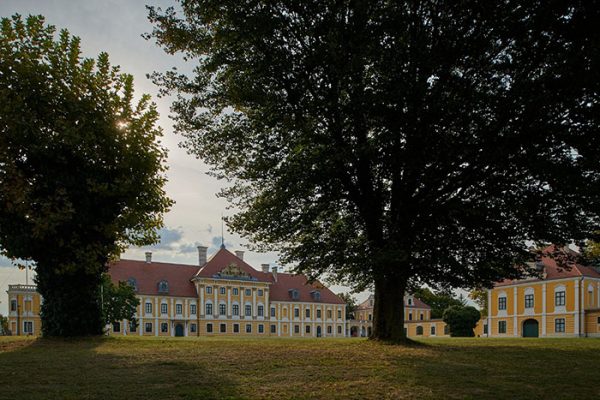
PHOTO: SANDRO LENDER
Vučedol Culture
The Museum exhibition is placed on more than 3,500 square meters. The sophisticatedly equipped showcases and other aids have been completed with a multimedia presentation with 40 monitors and 25 touch-screens, in order to present the history of Vukovar as best as possible, in the most varied and comprehensive way. There are more than 2,000 exhibits in the permanent exhibition from the fundus of the City Museum and 100 objects, mostly family portraits and landscapes of the Eltz family, from other museums in Zagreb and Osijek.
Somewhat outside of the city, only five kilometres downstream of the Danube, there is one of the most significant Neolithic sites – Vučedol. In the Vučedol Culture Museum, you can discover what the first Indo-European Vučedol house looked like – a basket, the oldest prehistoric four wheel cart, the oldest European calendar established on the observation of the winter sky, the first serial metal production and the first bronze in the world, a multitude of forms and decorations of the Vučedol ceramics.
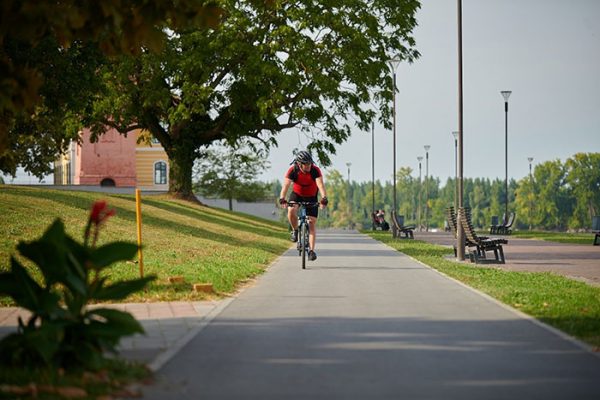
PHOTO: SANDRO LENDER
The rich museum exhibition is located in the renewed Franciscan complex. Apart from the art treasure, the visitors of the Franciscan monastery have access to the church, crypt, bell tower and claustra, a new library with a reading room and other content such as the winery and souvenir shop, including the outdoor area where there is the St Bono Pastoral Centre and a promenade with a view of the Danube. The Franciscan monastery with the Church of Saints Philip and Jacob give a new value to the rich cultural and historic heritage of Vukovar.
Talking about the cultural values of Vukovar, passing through the city you will notice most beautiful street artwork decorating the Vukovar pavements and building fronts. This gallery in the open was created through the VukovaART event. By means of an interactive map, you can find out who the authors were and where the works of art can be found.
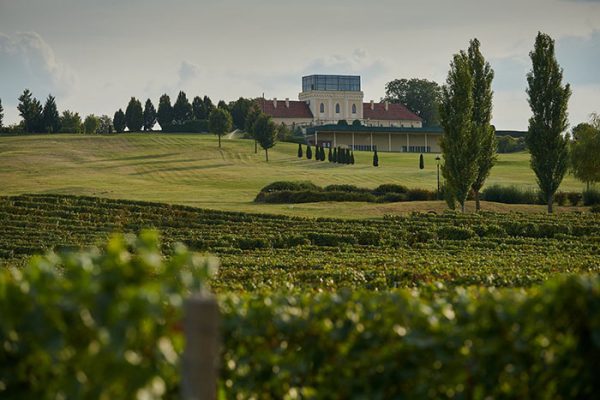
PHOTO: SANDRO LENDER
The Danube Kingdom of Wine and Antiques
If you go further to the east, in half an hour you will come to a town called the Danube kingdom of wine and antiques. In Ilok, almost in any street, there is at least one winery/cellar, while on the slopes of the surrounding hills there are vineyards so it is very easy to determine a wine route. The sorts that you can taste and purchase in Ilok are the following: Graševina, Chardonnay, Pinot Blanc, Pinot Gris, Rhine Riesling, Silvanac and Traminac of the white wines, and Pinot Noir, Frankovka and Cabernet Sauvignon from the red sorts.
On the gastro map of the city, there is also the Danube Hotel, the first in Slavonia to get the Michelin recommendation for its ‘fiš’ without bones. For a cuisine based on autochthonous ingredients but also prepared in the fusion style, one must visit the Principovac castle. It was built in 1864 as a summer residence of the Odescalchi family that used to stay there while hunting and grape picking.
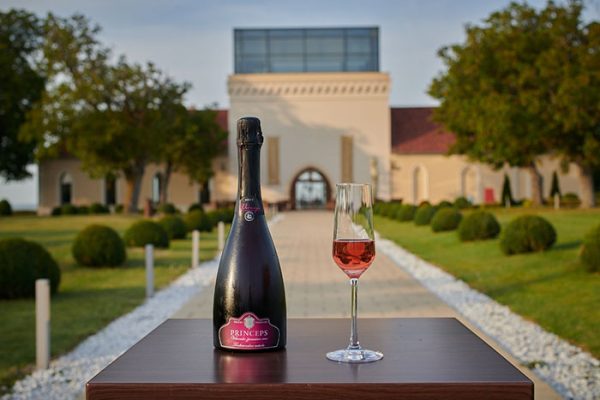
PHOTO: SANDRO LENDER
The life on the Danube river has been enriched with the construction of the steamboat port, rebuilt after the horrific Homeland War, together with a promenade, beach, hotel and moor for passenger boats (cruisers) making it a recreational and tourist complex today.
Active Vacation
If you are looking for a physical activity that includes a most beautiful view of Srijem, there are the slopes of the Fruška gora descending from the Liska top, the highest peak in the Vukovar-Srijem County (279m). Here you can walk the Skandala, a 14-kilometre marked trail passing through vineyards near the state border so you should follow the signs in order not to end up in the neighbouring country.
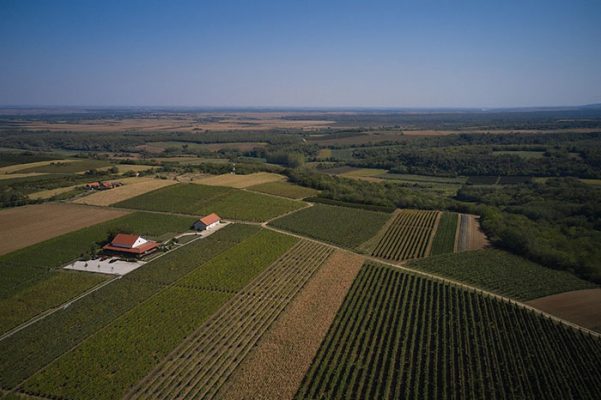
Papak Winery, SANDRO LENDLER
In order to study the history of the city, you should by all means visit the Odescalchi castle created on the foundations of a castle of King Nikola of Ilok. The time of the rule of Nikola of Ilok (a pretender to the royal crown, ban of Croatia, Slavonia and Mačva, Duke of Transylvania and King of Bosnia) is considered the ‘Golden Age of Ilok’. The city kernel was then fortified with walls largely preserved until today.
The Odescalchi castle houses the Ilok Town Museum, while below, there are the well-known Old Ilok Cellars. In the old kernel, there are also the Church of St John of Capistrano, a famous fighter against heresy and Ottoman warfare buried in Ilok, monuments of Islamic culture from the times of the Suleiman the Magnificent, the park and the garden.
The tourist offer of the Vukovar-Srijem County will overwhelm you, in particular with regard to its intact nature and historic heritage that can literally be delved into. By investing in the reconstruction and modernisation of the museum facilities and facilities the users of which are mostly citizens, the image of the city and the county has been changing.
Even if you are not interested in studying history, the content offered for family and active tourism is just as varied as the towns that we visited. Due to the increase in accommodation facilities, the intact nature is available to all for more than just a weekend excursion. Foreigners have already discovered these oases of peace and it is now up to us to learn to appreciate them.
The content was created in cooperation with the Tourist Board of the Vukovar-Srijem County
Photos: Sandro Lender
Source: Telegram.hr